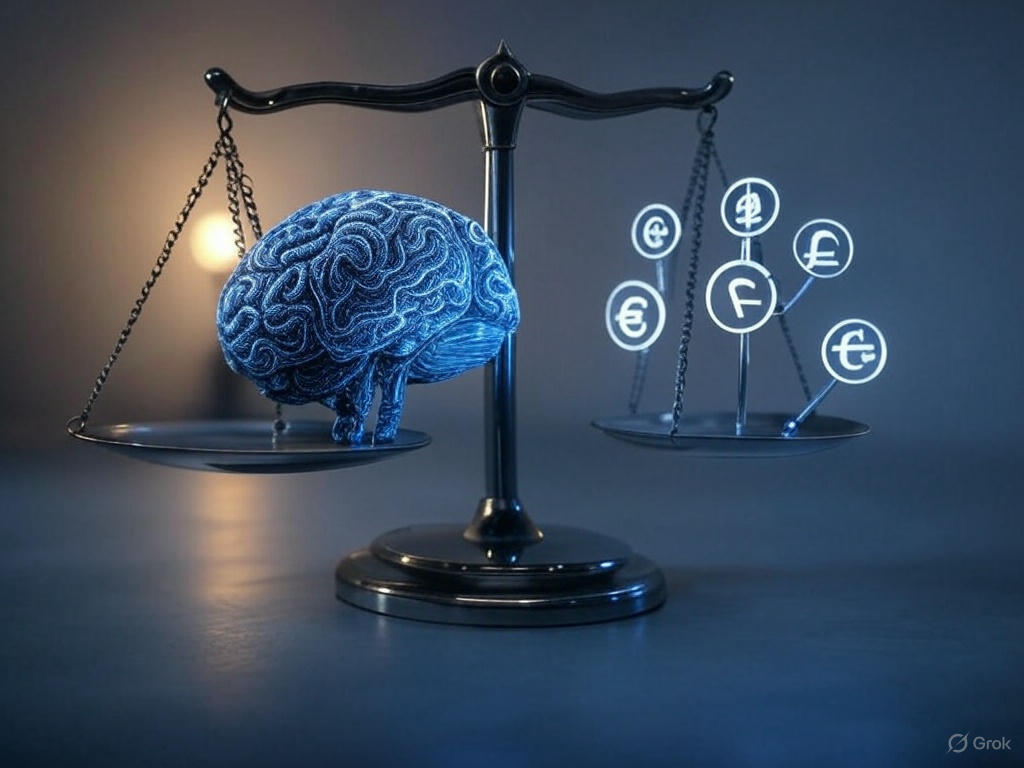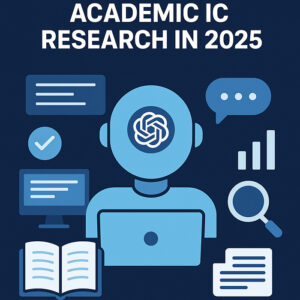AI Ethics: Navigating the Moral Landscape of Artificial Intelligence
Introduction
Artificial Intelligence (AI) has rapidly evolved from a theoretical concept to a transformative force in our society. As these systems become more sophisticated and pervasive, they raise profound ethical questions about their development, deployment, and governance. AI ethics examines the moral implications of creating and using intelligent systems, seeking to ensure these technologies align with human values and contribute positively to society.
This comprehensive guide explores the key ethical dimensions of AI, examining core principles, pressing challenges, and emerging frameworks for responsible AI development. Whether you’re a technology professional, policymaker, student, or concerned citizen, understanding AI ethics is essential for navigating our increasingly AI-driven world.
Table of Contents
- The Foundation of AI Ethics
- Fairness and Bias in AI Systems
- Transparency and Explainability
- Privacy and Data Ethics
- Accountability and Governance
- AI Safety and Control
- Economic and Social Impact
- Environmental Considerations
- Global Perspectives on AI Ethics
- Practical Frameworks for Ethical AI
- The Future of AI Ethics
- Conclusion
The Foundation of AI Ethics
The field of AI ethics builds upon centuries of moral philosophy while addressing novel challenges specific to intelligent technologies. Understanding these foundations provides context for contemporary ethical discussions.
Historical Context
Ethical inquiry into technology is not new—concerns about automation and its implications date back to the Industrial Revolution. However, AI presents unique challenges due to its potential for autonomy, scalability, and increasingly human-like capabilities.
The formal study of AI ethics emerged in the 1940s and 1950s alongside early computing developments. Isaac Asimov’s “Three Laws of Robotics,” introduced in his 1942 short story “Runaround,” represents one of the first attempts to articulate ethical guidelines for intelligent machines. While fictional, these laws sparked important discussions about how to embed ethical principles into artificial systems.
Core Ethical Traditions
AI ethics draws from several philosophical traditions:
Consequentialism evaluates actions based on their outcomes. Utilitarian approaches, which seek to maximize overall welfare, often inform AI development decisions that balance benefits against potential harms.
Deontological ethics focuses on duties and rules, emphasizing the inherent rightness or wrongness of actions regardless of their consequences. This approach influences discussions about absolute constraints on AI systems, such as prohibitions against deception or autonomy in lethal weapons.
Virtue ethics centers on the character and intentions of moral agents. In AI contexts, this perspective raises questions about what values we should embed in intelligent systems and how these systems might shape human character over time.
Justice and fairness theories address the equitable distribution of benefits and burdens. These considerations are particularly relevant to questions about who benefits from AI advancements and how to ensure equal access and representation.
Emerging Ethical Principles
Several core principles have emerged as central to AI ethics:
Beneficence: AI systems should benefit individuals and society, improving human welfare and capabilities.
Non-maleficence: AI should avoid causing harm or exacerbating existing inequalities.
Autonomy: Human freedom and decision-making authority should be respected and preserved.
Justice: The benefits and risks of AI should be distributed fairly, without systematic bias against particular groups.
Explicability: AI systems should be intelligible and their decisions explainable to those affected by them.
As discussed in our Technology Ethics in the Digital Age article, these principles provide a foundation for evaluating specific AI applications and policies.
For a deeper exploration of philosophical perspectives on AI ethics, visit the Stanford Encyclopedia of Philosophy’s entry on Ethics of Artificial Intelligence and Robotics.
Fairness and Bias in AI Systems
One of the most pressing ethical challenges in AI concerns fairness and bias. Because AI systems learn from data that may reflect historical prejudices and societal inequities, they risk perpetuating or amplifying these biases at scale.
Understanding AI Bias
Bias in AI systems can emerge in multiple ways:
Data Bias: Training data may under-represent certain populations or contain historical patterns of discrimination. For example, facial recognition systems trained primarily on light-skinned faces have shown higher error rates for darker-skinned individuals.
Algorithmic Bias: The design choices in algorithms themselves can produce biased outcomes, even with balanced data. For instance, choosing particular features for analysis or defining success metrics in specific ways can disadvantage certain groups.
Deployment Bias: How AI systems are implemented and used in real-world contexts can introduce bias, especially when users lack understanding of a system’s limitations.
Feedback Loops: When AI systems influence future data collection, they can create reinforcing cycles that amplify initial biases over time.
Real-World Examples
Several high-profile cases highlight the real-world impact of AI bias:
Criminal Justice: Risk assessment algorithms used in bail, sentencing, and parole decisions have been found to predict higher recidivism rates for Black defendants compared to white defendants with similar histories.
Healthcare: Clinical decision support systems trained on data from predominantly white patients have shown less accuracy when applied to minority populations.
Employment: Resume screening systems have demonstrated bias against women’s applications for technical roles, reflecting historical patterns in hiring.
Financial Services: Credit scoring algorithms have disadvantaged applicants from neighborhoods with historically limited access to banking services.
Approaches to Fairness
Addressing bias requires technical, procedural, and social interventions:
Technical Approaches:
- Diverse and representative training data
- Preprocessing techniques to identify and mitigate biases
- Fairness constraints and regularization methods during model training
- Post-processing methods to adjust outputs for greater demographic parity
Procedural Approaches:
- Diverse development teams bringing varied perspectives
- Impact assessments before deployment
- Regular auditing of systems for biased outcomes
- Stakeholder consultation throughout the development process
Social and Institutional Approaches:
- Legal frameworks prohibiting discriminatory uses of AI
- Industry standards and certification processes
- Education about AI limitations and proper interpretation
For practical resources on identifying and mitigating bias, explore the IBM AI Fairness 360 toolkit, which provides algorithms and educational materials for developers.
Transparency and Explainability
As AI systems make increasingly consequential decisions, their lack of transparency has emerged as a significant ethical concern. The “black box” nature of many advanced algorithms, particularly deep learning models, raises questions about accountability, trust, and human autonomy.
The Explainability Challenge
Explainability refers to the ability to understand and articulate how an AI system reaches its conclusions. This challenge has grown more pronounced as machine learning models have become more complex. While traditional rule-based systems operated through clear, programmed logic, modern neural networks often develop internal representations that are difficult for humans to interpret.
This opacity becomes problematic when:
- Individuals are denied opportunities without clear justification
- Professionals must rely on AI recommendations without understanding their basis
- Developers need to identify and correct errors or biases
- Regulators attempt to ensure compliance with legal standards
Levels of Transparency
Transparency in AI encompasses several dimensions:
Model Transparency: Understanding the overall structure and approach of an AI system.
Algorithmic Transparency: Knowledge about the specific algorithms and their parameters.
Data Transparency: Information about the training data and its characteristics.
Decision-Level Transparency: Explanations for specific outputs or decisions.
Different contexts may require different levels of transparency. For instance, a medical diagnosis system may need to provide detailed explanations for healthcare providers, while a music recommendation system might require less extensive justification.
Explainable AI (XAI) Approaches
The field of Explainable AI has developed various methods to address these challenges:
Inherently Interpretable Models: Using algorithms that are naturally understandable, such as decision trees or rule-based systems, when appropriate.
Post-hoc Explanation Methods: Applying techniques like LIME (Local Interpretable Model-agnostic Explanations) or SHAP (SHapley Additive exPlanations) to generate explanations for complex model outputs.
Visualization Techniques: Creating visual representations of AI decision-making processes to make them more intuitive for humans.
Counterfactual Explanations: Indicating what changes would alter the system’s decision (e.g., “Your loan would be approved if your income were $5,000 higher”).
For cutting-edge research in explainable AI, follow the work of the DARPA Explainable Artificial Intelligence (XAI) program.
Privacy and Data Ethics
AI systems typically require vast amounts of data for training and operation, raising significant privacy concerns and questions about appropriate data use.
The Privacy Paradox
Many powerful AI applications rely on personal data, creating tension between functionality and privacy protection. This “privacy paradox” is particularly evident in personalized services, where better personalization often requires more detailed user data.
The ethics of data collection and use involve questions such as:
- What data should be collected and for what purposes?
- How should consent be obtained and what constitutes meaningful consent?
- How long should data be retained?
- What secondary uses of data are appropriate?
- Who owns or controls data about individuals?
Data Ethics Principles
Several key principles guide ethical approaches to data in AI systems:
Purpose Limitation: Data should be collected for specific, legitimate purposes and not used in ways incompatible with these purposes.
Data Minimization: Only necessary data should be collected and processed.
Storage Limitation: Personal data should be kept only as long as needed for its stated purposes.
Informed Consent: Individuals should understand what data is being collected and how it will be used.
De-identification and Anonymization: Where possible, personal identifiers should be removed or obscured.
Privacy-Preserving Techniques
Technical approaches to enhancing privacy in AI include:
Federated Learning: Training models across multiple devices or servers while keeping data localized rather than centralizing it.
Differential Privacy: Adding carefully calibrated noise to data or algorithms to protect individual records while maintaining overall statistical validity.
Homomorphic Encryption: Performing computations on encrypted data without decrypting it.
Secure Multi-Party Computation: Enabling multiple parties to jointly compute functions without revealing their inputs to each other.
As we’ve discussed in our Data Privacy in the Age of AI blog post, balancing innovation with privacy protection requires both technical solutions and robust governance frameworks.
For more information on privacy-preserving AI techniques, visit the OpenMined project, which develops open-source tools for privacy-preserving machine learning.
Accountability and Governance
As AI systems become more autonomous and influential, determining responsibility for their actions becomes increasingly complex yet essential. Accountability mechanisms help ensure that AI development and deployment align with societal values and legal requirements.
The Accountability Gap
Traditional accountability models face challenges when applied to AI systems:
Distributed Responsibility: AI development often involves multiple actors, including data collectors, algorithm designers, system integrators, and end-users.
Autonomous Operation: Systems that learn and adapt create distance between designer intentions and system behaviors.
Unpredictability: Complex AI systems may produce unexpected outputs that were not specifically programmed or anticipated.
Opacity: The “black box” nature of many AI systems makes it difficult to determine why a particular decision was made.
Governance Approaches
Effective AI governance involves multiple complementary approaches:
Legal and Regulatory Frameworks: Laws like the EU’s General Data Protection Regulation (GDPR) and proposed AI-specific regulations establish requirements and boundaries for AI development and use.
Ethical Guidelines and Standards: Industry standards, professional codes of conduct, and organizational ethics principles provide normative guidance.
Impact Assessments: Algorithmic impact assessments evaluate potential consequences before systems are deployed.
Auditing and Monitoring: Regular review of AI systems during operation helps identify and address issues.
Certification Programs: Third-party certification verifies compliance with standards and best practices.
Human Oversight
Maintaining appropriate human oversight is crucial for responsible AI:
Human-in-the-Loop: Incorporating human judgment at key decision points, especially for consequential determinations.
Meaningful Human Control: Ensuring humans retain the ability to intervene in automated processes when necessary.
Clear Appeal Mechanisms: Providing pathways for contesting and reviewing automated decisions.
Liability Frameworks: Establishing clear responsibility and compensation systems for AI-related harms.
For comprehensive frameworks on AI governance, explore the OECD AI Principles, which provide internationally recognized guidelines for responsible AI development.
AI Safety and Control
As AI systems become more capable, ensuring they remain safe, controllable, and aligned with human values grows increasingly important. AI safety research addresses both near-term concerns with current systems and longer-term challenges posed by potentially more advanced future AI.
Current Safety Challenges
Today’s AI systems already present several safety considerations:
Robustness: AI systems should function reliably even when confronted with unexpected inputs or adversarial attacks.
Security: AI components should be protected against unauthorized access or manipulation.
Containment: Powerful AI systems may need appropriate constraints on their capabilities and access.
Testing and Validation: Thorough testing across diverse scenarios helps identify potential failure modes before deployment.
Long-term Safety Concerns
Research communities also consider more speculative concerns about advanced future systems:
Value Alignment: How can we ensure that increasingly autonomous systems act in accordance with human values and intentions?
Control Problem: How can humans maintain meaningful control over systems that may be more capable in certain domains?
Unintended Consequences: How can we anticipate and prevent harmful side effects of optimizing for seemingly benign objectives?
Emergent Behaviors: How should we address behaviors that emerge in complex systems but weren’t explicitly programmed?
Safety Research Directions
Several research areas address these challenges:
Specification: Developing precise and robust ways to communicate human objectives to AI systems.
Verification: Formally proving that systems will behave as intended within their design parameters.
Monitoring: Creating methods to observe and interpret AI system behavior during operation.
Interruptibility: Ensuring systems can be safely stopped or modified when necessary.
Corrigibility: Designing systems that facilitate their own correction when problems are identified.
For cutting-edge research on AI safety, follow organizations like the Machine Intelligence Research Institute and the Center for Human-Compatible AI.
Economic and Social Impact
The deployment of AI technologies has profound implications for labor markets, economic inequality, and social structures. Ethical AI development requires consideration of these broader societal impacts.
Labor Market Transformation
AI and automation are reshaping work across industries:
Job Displacement: Some roles are being automated entirely, particularly those involving routine cognitive or manual tasks.
Job Transformation: Many occupations are changing as AI augments human capabilities rather than replacing workers entirely.
New Job Creation: New roles are emerging around AI development, deployment, and oversight.
The ethical dimensions of these changes include:
- Ensuring displaced workers have pathways to new opportunities
- Distributing productivity gains equitably
- Maintaining meaningful work in an increasingly automated economy
- Addressing geographic concentrations of job losses
Distributional Effects
AI deployment may affect economic inequality in several ways:
Capital-Labor Balance: As automation increases, returns may shift further from labor toward capital owners.
Skill Premium: Workers with AI-complementary skills often command higher wages, potentially widening income gaps.
Market Concentration: AI advantages may accelerate winner-take-all market dynamics in digital economies.
Access Disparities: Unequal access to AI technologies could create new dimensions of advantage and disadvantage.
Social Fabric and Institutions
Beyond economic effects, AI raises questions about social cohesion and institutional change:
Democracy and Civic Discourse: AI-powered information filtering and synthetic media may affect public deliberation and democratic processes.
Cultural Production: AI-generated content raises questions about creativity, authorship, and cultural authenticity.
Social Interaction: Increasingly sophisticated AI companions and social robots may alter human relationships.
Educational Systems: AI will likely transform educational approaches and the skills prioritized for future generations.
For thoughtful analysis of AI’s socioeconomic implications, explore the AI Now Institute’s research, which focuses on the social implications of artificial intelligence.
Environmental Considerations
The environmental impact of AI constitutes an important but often overlooked dimension of AI ethics. As these technologies scale, their resource requirements and ecological footprint become increasingly significant.
Energy Consumption
Modern AI systems, particularly large deep learning models, require substantial computational resources:
Training Costs: Training cutting-edge models like large language models can consume energy equivalent to the lifetime emissions of multiple cars.
Inference Costs: While less intensive than training, the ongoing operation of AI systems across billions of devices adds up to significant energy usage.
Data Centers: The physical infrastructure supporting AI computation requires energy for both processing and cooling.
Resource Extraction
AI hardware depends on raw materials with their own ethical considerations:
Rare Earth Elements: Components in computing hardware often require minerals with significant extraction impacts.
Supply Chain Ethics: Issues of labor conditions, community displacement, and pollution in mining operations raise concerns.
E-Waste: The rapid obsolescence of computing hardware contributes to electronic waste challenges.
Mitigation Approaches
Several approaches can reduce AI’s environmental footprint:
Efficient Algorithms: Developing more computationally efficient models that require less processing power.
Green Energy: Powering AI infrastructure with renewable energy sources.
Hardware Optimization: Designing specialized chips that perform AI tasks more efficiently.
Impact Measurement: Standardizing and reporting the environmental costs of AI development and deployment.
Lifecycle Assessment: Considering environmental impacts across the full lifecycle of AI systems.
For resources on sustainable AI, check out the Green Software Foundation, which provides tools and best practices for environmentally responsible computing.
Global Perspectives on AI Ethics
AI ethics is not culturally neutral—different societies bring varied values, priorities, and traditions to ethical discussions. Developing globally relevant ethical frameworks requires engaging with this diversity.
Cultural Variations
Ethical priorities may vary across cultures in several ways:
Individual vs. Collective Emphasis: Societies differ in how they balance individual rights against collective welfare.
Risk Tolerance: Cultural attitudes toward risk and uncertainty influence acceptable safety thresholds.
Privacy Conceptions: Cultural norms shape expectations about acceptable data collection and use.
Authority and Autonomy: Views on appropriate decision-making authority vary across societies.
Power Dynamics and Representation
Global AI ethics must address international power imbalances:
Technological Concentration: AI development capabilities are concentrated in a few countries and companies, primarily in North America, Europe, and East Asia.
Data Colonialism: Concerns about extractive data practices where information flows from less powerful to more powerful nations.
Diverse Participation: Ensuring globally representative voices in AI governance discussions.
Benefit Distribution: Addressing how AI benefits and risks are distributed internationally.
International Governance Efforts
Several initiatives address AI ethics at the international level:
UNESCO’s Recommendation on the Ethics of AI: The first global standard-setting instrument on AI ethics, adopted by UNESCO member states.
OECD AI Principles: Guidelines for trustworthy AI adopted by OECD countries and beyond.
Global Partnership on AI (GPAI): An international initiative to guide responsible AI development and use.
Standards Organizations: Bodies like the IEEE and ISO developing technical standards with global applicability.
For perspectives on global AI ethics, explore the Global AI Ethics Consortium, which brings together researchers from around the world working on ethical, legal, and social aspects of AI.
Practical Frameworks for Ethical AI
Translating ethical principles into practical action requires concrete frameworks and methodologies. Organizations and practitioners have developed various approaches to operationalize AI ethics.
Ethics by Design
Ethics by Design incorporates ethical considerations throughout the AI development lifecycle:
Requirements Phase: Identifying stakeholders and their values, conducting impact assessments, and setting ethical objectives.
Design Phase: Creating diverse and representative datasets, selecting appropriate algorithms, and incorporating fairness metrics.
Implementation Phase: Building in transparency mechanisms, safety measures, and human oversight capabilities.
Testing Phase: Conducting thorough testing for biases, vulnerabilities, and unintended consequences.
Deployment Phase: Implementing monitoring systems, feedback channels, and update mechanisms.
Organizational Practices
Organizations can establish structures and processes to support ethical AI:
Ethics Committees: Dedicated groups reviewing AI initiatives for ethical implications.
Ethics Officers: Professionals responsible for ethical oversight across AI projects.
Training Programs: Education for developers, managers, and users on AI ethics issues.
Incentive Structures: Aligning rewards and recognition with ethical considerations.
Documentation Requirements: Standardized documentation of datasets, models, and decision processes.
Tools and Techniques
Practical tools help implement ethical principles:
Algorithmic Impact Assessments: Structured evaluations of potential consequences before deployment.
Datasheets for Datasets: Standardized documentation detailing dataset characteristics, collection methods, and intended uses.
Model Cards: Documentation describing model performance across different conditions and populations.
Fairness Metrics and Tools: Quantitative measures and software libraries for assessing algorithmic fairness.
Red-Teaming Exercises: Adversarial testing to identify potential misuses or vulnerabilities.
For practical resources on implementing ethical AI, visit The Alan Turing Institute’s Guide to Responsible AI, which provides detailed guidance for practitioners.
The Future of AI Ethics
The field of AI ethics continues to evolve rapidly, responding to technological developments and emerging societal concerns. Several trends and challenges will likely shape its future trajectory.
Emerging Ethical Frontiers
New technologies bring novel ethical considerations:
Artificial General Intelligence (AGI): Systems approaching human-level capabilities across domains would raise profound questions about agency, rights, and control.
Human-AI Integration: Technologies merging human and artificial capabilities, such as brain-computer interfaces, create new ethical dimensions.
Autonomous Systems: Increasing autonomy in physical systems like self-driving vehicles and drones intensifies questions about delegation of decisions.
Synthetic Media: Advanced generation capabilities for text, images, audio, and video raise concerns about authenticity, consent, and information integrity.
Institutional Evolution
The governance landscape for AI ethics is still developing:
Regulatory Maturation: Moving from voluntary guidelines to enforceable standards and regulations.
Professional Certification: Development of professional standards and accreditation for AI practitioners.
Insurance and Liability: Evolution of risk management approaches for AI deployments.
International Coordination: Greater harmonization of approaches across jurisdictions.
Interdisciplinary Integration
The future of AI ethics will likely involve deeper integration across disciplines:
Technical-Ethical Integration: Closer collaboration between technical AI research and ethical analysis.
Cross-Cultural Dialogue: More substantive engagement with diverse ethical traditions and perspectives.
Public Engagement: Broader participation of affected communities in ethical deliberation.
Arts and Humanities: Recognition of the role of cultural and creative perspectives in shaping ethical imagination.
For forward-looking perspectives on AI ethics, follow the work of organizations like the Future of Humanity Institute and the Center for the Governance of AI, which research long-term ethical questions around advanced AI systems.
Conclusion
AI ethics is not a peripheral concern or an optional add-on to technical development—it is fundamental to ensuring that AI technologies serve human flourishing and reflect our deepest values. As these systems become more capable and pervasive, the stakes of getting ethics right only increase.
The field faces significant challenges: balancing innovation with caution, respecting cultural diversity while establishing universal protections, addressing short-term applications while preparing for long-term possibilities, and translating abstract principles into concrete practices. Yet progress in each of these areas demonstrates that ethical AI development is not only necessary but achievable.
Moving forward requires commitment from multiple stakeholders:
- Researchers advancing technical solutions to ethical challenges
- Developers implementing responsible practices in their work
- Companies prioritizing ethical considerations alongside business objectives
- Policymakers creating appropriate regulatory frameworks
- Educators preparing the next generation to think critically about AI
- Civil society representing diverse perspectives and holding other actors accountable
- Users making informed choices about the AI systems they adopt
By approaching AI ethics as a shared responsibility—one requiring ongoing dialogue, humility, and commitment—we can work toward technological advancement that genuinely enhances human capability, dignity, and well-being.
Further Reading and Resources
For those interested in exploring AI ethics further, here are some valuable resources:
- Montreal AI Ethics Institute – Research and educational materials on AI ethics
- Ethics and Governance of AI Initiative – Harvard and MIT collaboration on AI ethics
- Partnership on AI – Multi-stakeholder organization developing best practices
- ACM FAccT Conference – Leading academic conference on fairness, accountability, and transparency in AI
- The Ethics of Artificial Intelligence – Nick Bostrom and Eliezer Yudkowsky’s foundational paper
For ongoing discussions of ethical issues in AI, consider following our Ethical Tech series, where we regularly explore emerging challenges and approaches in responsible technology development.
This article was last updated on March 11, 2025, and reflects information available up to that date. As the field of AI ethics evolves rapidly, some details may have changed since publication.









